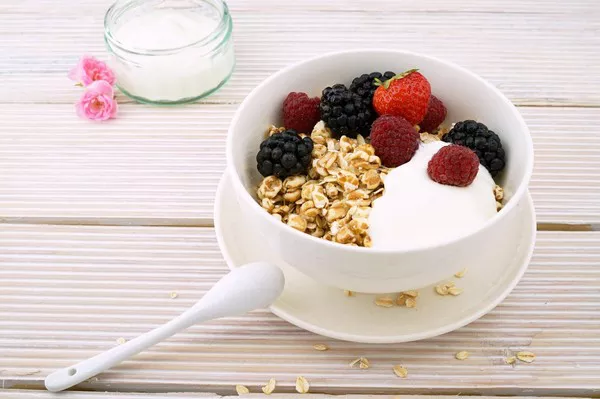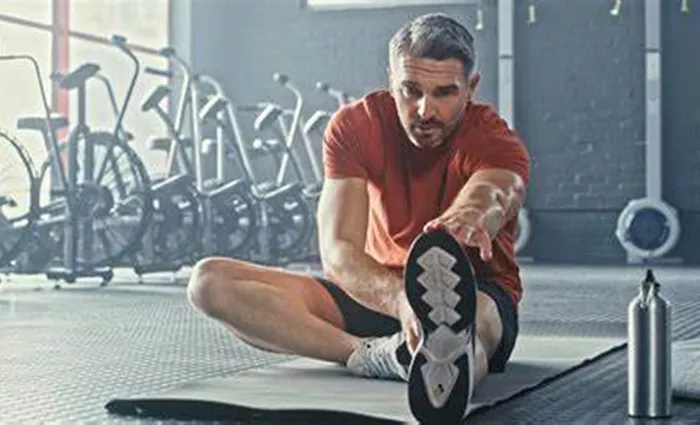Fitness pole dancing has grown into a widely recognized and respected form of exercise that combines strength training, flexibility, and cardiovascular work. Initially, pole dancing was primarily associated with clubs and adult entertainment, but in recent years, it has evolved into a fitness discipline practiced by people of all ages and fitness levels. Whether you’re seeking a new, fun way to exercise, want to tone your body, or develop more confidence, fitness pole dancing classes offer a diverse and exciting workout.
In this article, we will explore what fitness pole dancing is, the benefits it offers, how it differs from traditional fitness routines, and what you can expect from a typical class. We will also discuss how you can get started and the positive impact pole fitness can have on both physical and mental health.
What is Fitness Pole Dancing?
Fitness pole dancing is a combination of dance, acrobatics, and strength training performed around a vertical pole. It integrates fluid dance moves with challenging bodyweight exercises that use the pole for support and resistance. As a form of exercise, pole dancing targets multiple muscle groups simultaneously, making it an effective full-body workout. Pole dancing requires strength, endurance, flexibility, and balance, making it a comprehensive fitness option.
Unlike traditional forms of dance or gymnastics, pole fitness includes both cardio-based movements and strength-building exercises, all while keeping the body moving in creative and dynamic ways. Pole dancing incorporates spins, climbs, holds, and inversions, making it both physically demanding and aesthetically beautiful. The class structure typically includes exercises that gradually increase in difficulty as you develop your skills and strength.
The Benefits of Fitness Pole Dancing
Fitness pole dancing offers numerous physical and mental health benefits that make it a unique and valuable form of exercise. This full-body workout not only helps you build muscle and flexibility but also boosts self-confidence, reduces stress, and improves mental well-being. Below, we delve deeper into the physical and mental benefits of pole fitness.
Full-Body Strengthening
One of the key benefits of pole fitness is its ability to strengthen almost every muscle group in the body. Pole dancing engages the core, arms, shoulders, legs, and back as you use your body weight to perform various moves. For example, performing spins requires strong arms and shoulders, while climbing the pole requires significant leg and core strength. With regular practice, you’ll notice a significant improvement in muscle tone and strength.
In addition to building muscle, pole dancing also enhances endurance, as it requires sustained effort over time. The continuous engagement of different muscle groups helps build both muscular strength and cardiovascular stamina, which improves overall fitness.
Flexibility and Mobility
Flexibility is another significant benefit of fitness pole dancing. Many of the moves in pole fitness require you to stretch and extend your body, helping to improve your flexibility over time. Increased flexibility can improve your range of motion and reduce the risk of injury, as it enhances your muscles’ ability to stretch and contract more effectively.
Additionally, pole fitness can help improve joint mobility. As you perform different moves, particularly those involving stretches and splits, your joints become more mobile and flexible. This increased flexibility helps with better posture, alignment, and overall physical health.
Weight Loss and Fat Reduction
Pole dancing is an effective cardiovascular workout that can help you burn calories and lose weight. Since pole fitness incorporates high-intensity movements and engages multiple muscle groups, it can burn fat while toning the body. The calorie-burning potential of pole dancing is similar to other cardio-based workouts like running or cycling. The high-intensity nature of the workout also helps to elevate your metabolism, leading to continued calorie burn even after the workout ends.
While it may not replace a structured weight loss plan, pole dancing can significantly contribute to fat reduction by boosting your metabolic rate and promoting a leaner physique. Moreover, the combination of strength and cardio exercises ensures that weight loss occurs alongside muscle toning, giving you a more sculpted body.
Confidence Boost and Empowerment
Pole fitness provides an opportunity to boost your self-esteem and body confidence. Many individuals find that pole dancing enhances their self-image by showing them how strong, flexible, and capable their bodies truly are. The act of performing challenging tricks and achieving new skills fosters a sense of accomplishment, and overcoming these physical obstacles can lead to greater self-assurance.
Furthermore, the supportive environment in most fitness pole dancing classes helps to build a sense of community. Sharing your progress and celebrating your milestones with classmates can provide emotional support and motivation. This environment of positivity and encouragement can help you feel more confident, not just in the studio but also in other areas of your life.
Mental Health and Stress Relief
Pole fitness also provides several mental health benefits. Like other forms of exercise, pole dancing promotes the release of endorphins—hormones that are responsible for feelings of happiness and euphoria. These endorphins can reduce stress and alleviate feelings of anxiety or depression. The mental focus required during pole dancing helps to distract the mind from external worries, providing a temporary escape from daily stressors.
In addition, the creative expression involved in pole dancing—such as choreographing your own routines—can have a positive impact on mental well-being. The freedom to express yourself through movement can help improve your mood and foster a sense of personal satisfaction.
What to Expect in a Fitness Pole Dancing Class
If you’re considering taking a fitness pole dancing class, you might be wondering what the experience will be like. Fitness pole dancing classes are designed to guide you through a full-body workout while teaching you the fundamentals of pole dancing. These classes typically follow a structured format that includes a warm-up, skill-building exercises, strength training, and cool-down stretching. Below is a breakdown of what you can expect in a typical fitness pole dancing class.
Warm-Up and Stretching
Before jumping into pole work, most fitness pole dancing classes begin with a warm-up. This is important for preparing the body for more intense physical activity and reducing the risk of injury. The warm-up often involves light cardio exercises, such as jogging or jumping jacks, to increase the heart rate and get the blood flowing. This is followed by dynamic stretching to improve flexibility and loosen up the muscles.
Proper warm-up routines are essential to prevent muscle strains and to enhance performance during the class. They ensure that your body is prepared for the challenging movements ahead.
Learning Basic Pole Moves
After the warm-up, you’ll begin learning pole-specific techniques. For beginners, this typically includes learning basic spins, climbs, and poses. Pole dancing requires a good deal of upper body strength, so your instructor may guide you through various exercises that target the arms, shoulders, and core.
The moves you learn will depend on your skill level and the class you’re attending. As a beginner, you may start with simple spins and grips, and as you progress, the complexity of the tricks will increase. Your instructor will demonstrate the moves, then guide you through them step by step, ensuring that you’re using proper form and technique.
Strength and Conditioning
In addition to pole-specific exercises, most pole fitness classes include strength and conditioning segments. These segments involve bodyweight exercises like planks, push-ups, squats, and lunges. Strength and conditioning exercises are crucial for building the muscle required for more advanced pole tricks. These exercises also improve overall fitness, helping to increase endurance and stamina.
These drills focus on specific muscle groups, particularly those used during pole work, such as the arms, core, and legs. Stronger muscles are necessary for performing challenging moves such as inversions or aerial poses.
Choreography and Routines
As you progress in your pole fitness journey, you may be introduced to choreography or dance routines. These routines involve combining different pole moves into a fluid sequence, allowing you to express yourself creatively. Learning choreography can be one of the most fun and rewarding aspects of pole fitness, as it allows you to showcase your skills in a more artistic and rhythmic way.
Routines also help you improve coordination and muscle memory. You will need to remember the sequence of moves while maintaining balance, strength, and fluidity. Practicing choreography not only helps with fitness but also encourages self-expression and confidence.
Cool-Down and Stretching
After an intense workout, a cool-down period is essential to help your body return to a resting state and prevent injury. Cool-down stretches help reduce muscle tension and improve flexibility. The cool-down often involves slower-paced movements, such as gentle stretching and deep breathing exercises. These stretches help relax the muscles and ensure that you recover properly after the class.
Supportive Community and Motivation
Fitness pole dancing classes provide a sense of community and support. Most pole fitness studios create an inclusive and encouraging environment where participants can share their progress and cheer each other on. The supportive atmosphere helps you feel more confident, even when learning new, challenging tricks. Instructors are there to guide and motivate you, ensuring that you’re always progressing at your own pace.
How to Get Started with Fitness Pole Dancing
Getting started with pole fitness is easier than you might think. If you’re interested in joining a class, follow these simple steps to get started on your pole fitness journey.
1. Find a Reputable Studio
Start by researching local studios that offer pole fitness classes. Look for studios that have experienced, certified instructors who specialize in pole fitness. Many studios offer beginner classes, so even if you’ve never tried pole dancing before, you can still get started with a solid foundation.
2. Wear Comfortable Clothing
Wear comfortable clothing that allows for flexibility and movement. Most pole fitness enthusiasts wear a sports bra and shorts, as the skin needs to make contact with the pole for grip. Avoid wearing lotion or oils on your skin before class, as this can reduce grip on the pole.
3. Stay Consistent
Pole fitness requires practice and consistency. Aim to attend classes regularly, and don’t be discouraged if you don’t master a move right away. With consistent practice, you will see improvements in your strength, flexibility, and confidence.
4. Enjoy the Journey
Pole fitness is a fun and empowering journey. Celebrate your progress, no matter how small, and enjoy the process of learning and growing. It’s a unique fitness activity that allows you to explore your body’s potential while having fun.
Conclusion
Fitness pole dancing is more than just a workout; it’s an opportunity to strengthen your body, boost your confidence, and have fun. Whether you’re a beginner or an experienced fitness enthusiast, pole dancing offers numerous physical and mental health benefits. With its combination of strength, flexibility, and cardiovascular exercise, pole fitness is a full-body workout that helps improve muscle tone, reduce stress, and increase self-esteem. By getting started with pole dancing classes, you can embark on a fitness journey that is both challenging and rewarding, all while expressing yourself through movement and creativity.
Related Topics





























